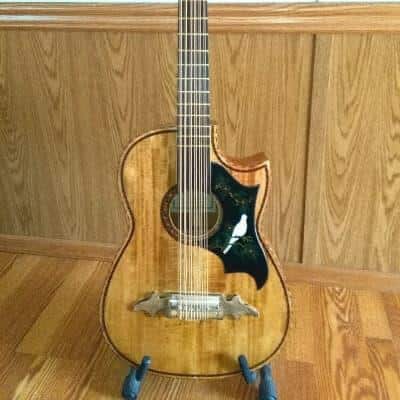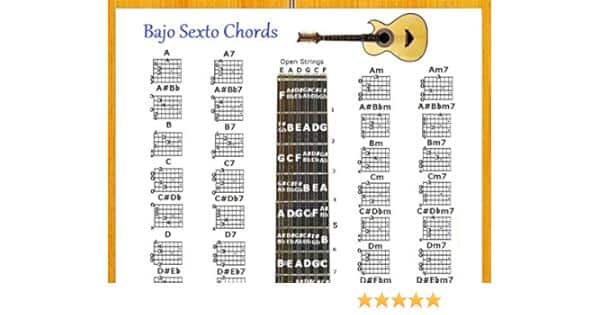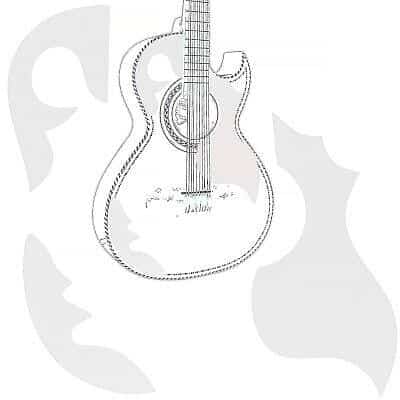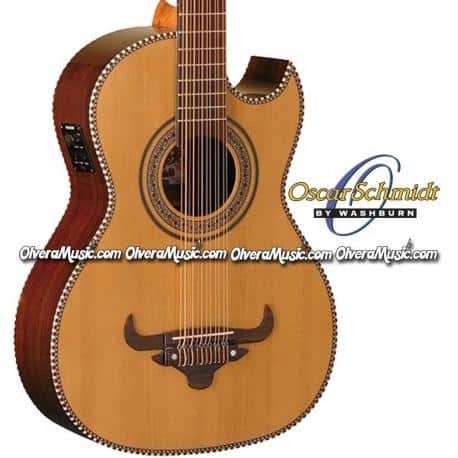The first time I heard a bajo sexto, I felt like I’d discovered a hidden treasure. Its rich, resonant tones filled the air, weaving a tapestry of sound that was both familiar and exotic. As a guitar journalist with a master’s in Contemporary Improvisation, I’ve encountered countless string instruments, but the bajo sexto stood out as something truly special. This twelve-string Mexican marvel isn’t just an instrument; it’s a cultural icon, a bridge between tradition and innovation.
In this comprehensive guide, I’ll take you on a journey through the world of the bajo sexto. We’ll explore its unique construction, delve into its fascinating history, and uncover the secrets of its distinctive sound. Whether you’re a seasoned musician or a curious newcomer, you’ll discover why this instrument has captured the hearts of players and listeners alike. Join me as we unravel the mystery and magic of the bajo sexto, and perhaps, like me, you’ll find yourself falling in love with this extraordinary Mexican string instrument.
What is a Bajo Sexto Guitar?
Characteristics and Construction

As I’ve handled numerous bajo sexto guitars in my role at ‘Acoustic Guitar’ magazine, I’ve come to appreciate the intricacies of their construction. These 12-string instruments are typically crafted with a large, deep body, often using Mexican cedar for the back and sides, and spruce or cedar for the top. The types of bajo sexto can vary, but most feature a distinctive elongated headstock to accommodate the six pairs of strings. The neck is usually made from mahogany or maple, with a rosewood or ebony fretboard. What truly sets the bajo sexto apart is its robust bracing pattern, designed to withstand the tension of 12 strings while allowing the top to vibrate freely, producing its characteristic rich, resonant tone. This unique construction contributes significantly to the instrument’s powerful bass response and ability to cut through in ensemble settings.
Differences from Other Guitars

As I’ve delved into transcribing and analyzing various guitar styles, I’ve come to appreciate the unique characteristics of the bajo sexto. While it shares similarities with other 12-string instruments, its distinct features set it apart. Unlike standard 12-string guitars, the bajo sexto’s lower register and thicker strings produce a richer, more resonant tone. When comparing bajo sexto vs bajo quinto, the additional sixth course gives the bajo sexto a fuller sound and extended range. The differences between bajo sexto and 12-string guitar are evident in their tuning and playing techniques. The bajo sexto’s role in conjunto and norteño music demands specific strumming patterns and chord voicings that differ from traditional guitar styles. Its ability to provide both rhythmic foundation and melodic fills makes it an irreplaceable instrument in these genres, showcasing its versatility and importance in Mexican and Tex-Mex music traditions.
History and Origins of the Bajo Sexto

As a musician with a background in Contemporary Improvisation, I’ve always been fascinated by the rich tapestry of folk instruments across cultures. The bajo sexto holds a special place in this tapestry, and its history is as captivating as its sound. The bajo sexto’s journey from Mexican ranches to international stages is a tale of cultural resilience and musical innovation. But where did it all begin??
My research and personal experiences have led me to trace the bajo sexto’s roots back to the late 19th century in Mexico. It emerged as an evolution of earlier instruments in Mexican folk music, particularly the bajo quinto and the guitarra séptima. The instrument’s development was closely tied to the musical traditions of northern Mexico, where it became an integral part of conjunto and norteño music.
As I’ve studied the history of bajo sexto, I’ve observed parallels with other folk instruments I’ve encountered. Like the bouzouki in Greek music or the oud in Middle Eastern traditions, the bajo sexto adapted to meet the musical needs of its community. Its twelve strings and deep, resonant tone made it ideal for providing both rhythm and harmony in ensemble settings, a role I’ve seen echoed in various cultural contexts.
The bajo sexto’s journey from rural Mexico to international recognition is a testament to its versatility and the enduring appeal of Mexican folk music. As someone who has explored improvisation across different musical traditions, I’m continually inspired by how the bajo sexto has maintained its cultural identity while adapting to new musical landscapes.
How to Play the Bajo Sexto
Tuning Guide

As an experienced guitarist and author, I’ve found that mastering the bajo sexto tuning guide is crucial for anyone looking to play this unique instrument. The bajo sexto’s 12 strings are arranged in six courses, each with its own distinct tuning. I’ll walk you through the process, drawing from my years of experience and the insights I’ve shared in my book “Color Your Chords”. The standard tuning, from lowest to highest, is: E-A-D-G-C-F. However, it’s important to note that each course consists of two strings tuned an octave apart, creating a rich, full-bodied sound that’s characteristic of the bajo sexto. Mastering this tuning is essential for achieving the instrument’s authentic tone and playing traditional Mexican and Tex-Mex music styles effectively.
Basic Techniques and Chords

When learning bajo sexto, mastering basic techniques and chords is crucial. I’ve found that the instrument’s unique tuning and 12-string configuration require a specific approach. Start with simple strumming patterns, focusing on the lower strings to establish the rhythmic foundation. As you progress, incorporate fingerpicking techniques to highlight the instrument’s rich tonal range. I recommend beginners begin with open chords, particularly those commonly used in Mexican folk music. The G, C, and D chords are excellent starting points, allowing you to play many traditional songs.
Once comfortable, explore more complex chord voicings and progressions. Pay special attention to the bajo sexto’s role in providing both rhythm and bass. Practice transitioning between chords smoothly, maintaining a steady tempo. Remember, the bajo sexto’s unique sound comes from its doubled strings, so strive for clean, resonant chords. With consistent practice, you’ll soon develop the dexterity and musicality needed to play this fascinating instrument proficiently.
Role in Mexican and Tex-Mex Music

As a music journalist, I’ve had the privilege of immersing myself in countless musical traditions. Yet, few instruments have captivated me quite like the bajo sexto. The bajo sexto isn’t just an instrument; it’s the heartbeat of Norteño and Tex-Mex music. But how did it become so integral to these vibrant musical traditions?? It’s a question that has driven my research and passion for years.
In my experience, the bajo sexto’s role in Norteño music is nothing short of transformative. Its deep, resonant tones provide the foundation upon which the genre’s signature sound is built. I’ve watched seasoned players coax melodies from its strings that seem to tell stories of generations past, each note carrying the weight of cultural heritage.
When it comes to Tex-Mex music, the bajo sexto takes on a different character. Here, it’s the bridge between traditional Mexican sounds and the twangy influences of American country. I’ve seen firsthand how this versatile instrument adapts, creating a unique fusion that speaks to the blended cultural identity of the Texas-Mexico border region.
What truly sets the bajo sexto apart, in my view, is its ability to anchor an ensemble while simultaneously adding richness and depth to the overall sound. It’s a musical chameleon, capable of providing rhythmic support one moment and taking center stage the next. This adaptability is why, after years of studying various regional styles, I believe the bajo sexto remains an irreplaceable cornerstone of Mexican and Tex-Mex music.
Maintaining Your Bajo Sexto

As a seasoned guitar player, I’ve learned that bajo sexto maintenance is crucial for preserving your instrument’s sound and longevity. A well-maintained bajo sexto can last for generations. Want to know the secrets to keeping your instrument in prime condition for years to come? It all starts with daily care. After each playing session, I make it a habit to wipe down the strings and body with a soft, lint-free cloth. This simple act removes corrosive oils and sweat, preventing premature wear.
For deeper cleaning, I use a specialized guitar polish every few months, carefully avoiding the fretboard. Speaking of fretboards, I’ve found that occasional conditioning with lemon oil keeps the wood supple and prevents cracks. Don’t forget about humidity control – I keep my bajo sexto in a case with a humidifier when not in use, especially during dry seasons. Regular string changes and proper storage are also key to maintaining that rich, warm tone that makes the bajo sexto so special.
Where to Buy a Bajo Sexto Guitar

When it comes to finding a bajo sexto guitar, I’ve learned that the journey can be as rewarding as the destination. Finding the perfect bajo sexto can be like searching for buried treasure. But what if I told you I have a map to the X that marks the spot?? Through my years of experience and industry connections, I’ve uncovered some hidden gems in the world of bajo sexto guitars for sale.
For those seeking authenticity, I recommend exploring traditional Mexican markets or specialized music stores in Texas. These places often house unique, handcrafted instruments with rich histories. Online marketplaces like Reverb and eBay can also be treasure troves, but buyer beware – always verify the seller’s reputation. For a more curated experience, I’ve had great success with custom luthiers who can craft a bajo sexto to your exact specifications. Remember, when you buy a bajo sexto guitar, you’re not just acquiring an instrument; you’re embracing a piece of cultural heritage.
FAQs
What is a Bajo Sexto guitar?
A Bajo Sexto is a Mexican 12-string instrument that is larger than a standard guitar. It features six courses of doubled strings and is commonly used in Tejano, Norteño, and other Mexican folk music styles.
How is the Bajo Sexto tuned?
The Bajo Sexto is typically tuned in fourths, from lowest to highest: E-A-D-G-C-F. Each course consists of two strings, with the lower four courses tuned an octave apart and the upper two courses tuned in unison.
What is the role of the Bajo Sexto in Mexican music?
The Bajo Sexto plays a crucial rhythmic and harmonic role in Mexican music. It provides a full, rich sound that acts as both a bass and rhythm instrument, often accompanying accordions or other lead instruments in genres like Norteño and Conjunto.
How does the Bajo Sexto differ from a standard guitar?
The Bajo Sexto is larger than a standard guitar, has a longer scale length, and features 12 strings arranged in 6 courses. It produces a deeper, fuller sound and is designed to fulfill both bass and rhythm guitar roles simultaneously in ensemble settings.
What materials are typically used to make a Bajo Sexto?
Bajo Sextos are often crafted using a combination of tonewoods. The body is typically made from woods like maple, cedar, or mahogany, while the neck is usually constructed from maple or mahogany. The fretboard is commonly made of rosewood or ebony.
Conclusion
The bajo sexto is more than just an instrument – it’s a gateway to a rich musical tradition. Are you ready to become part of its ongoing story? As we’ve explored throughout this guide, the bajo sexto stands as a testament to Mexico’s vibrant musical heritage. From its unique construction to its integral role in various genres, this 12-string marvel continues to captivate musicians and audiences alike.
As a passionate advocate for diverse guitar styles, I hope this comprehensive look at the bajo sexto has ignited your curiosity. Whether you’re drawn to its deep, resonant tones or intrigued by its cultural significance, remember that mastering this Mexican string instrument is a journey worth embarking on. By understanding its history, learning its techniques, and appreciating its place in modern music, you’re not just playing an instrument – you’re preserving a tradition and contributing to its evolution. I encourage you to take the next step, pick up a bajo sexto, and let its rich harmonies become part of your musical story.